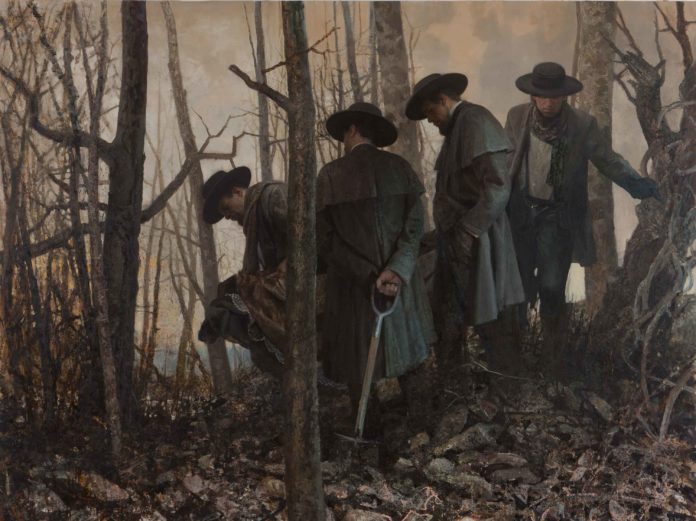
BY DAVID MOLESKY
After graduating from Haverford College and the Pennsylvania Academy of the Fine Arts, Vincent Desiderio (b. 1955) emerged on New York City’s painting scene in the mid-1980s. By the early ’90s he was picked up by the blue-chip global gallery Marlborough, which presented his latest solo show in New York last winter, and his pictures continue to enter important public and private collections.
Desiderio has a unique perspective on art, not only because he is exceptionally well-read, but also because he worked primarily in abstraction before becoming a figurative painter. I visited his studio in Sleepy Hollow, New York, to hear his thoughts on painting in relation to history, literature, and contemporary society.
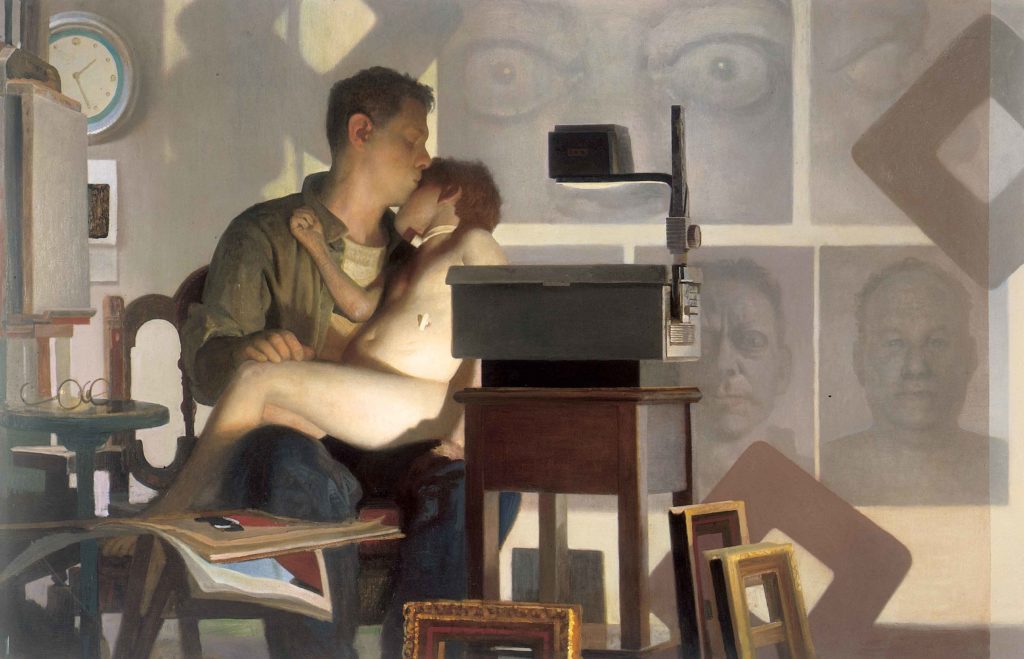
David Molesky: What kinds of things do you think about when beginning a painting?
Vincent Desiderio: I approach a new painting with both excitement and terror. On one hand, the canvas seems like a terrifying void; I feel a type of hysteria that compels me to fill it, lest I lose my footing and fall. In this sense, the act of painting provides me with an armature for rational composure. On the other hand, reason is preordained by the blank white rectangle into which I place the visual elements.
In the past, some painters saw space as a perspectival structure into which objects are placed according to the laws that govern the artificial visual field. For them space was homogenous, in line with the Renaissance notion that it is measurable. This differed from an older idea that space is heterogeneous — that when we move an object within the void, we have moved space itself. Although the former camp won the day, the latter has endured. While David and Ingres placed their figures within a measured continuity of space, Delacroix allowed the figures to generate the space’s nature through expression and distortion.
DM: As our culture’s literacy diminishes, can paintings that reflect a consciousness of literary traditions inspire people to learn?
VD: I am sometimes criticized for using language that is overly intellectualized. This is due partly to my education and upbringing but mostly to my faith that painting is an encoding of thought in a highly condensed manner. I don’t believe painters have an obligation to make “literate” pictures, but I do believe that the curricula used to educate people about painting are irrelevant vis-à-vis painting’s vital importance today. This is due partly to the general view of painting as anachronistic, and also to how contemporary painting is taught in universities, as well as ateliers’ neoconservative effort to categorically reject the modernist paradigm.
We are experiencing a dumbing down of all things once regarded as “high” culture. But this is a recurring condition historically. It’s just like the idea that everything has been done before; many people have been taught to think of painting as an evolutionary process akin to scientific revolutions and changes in technology.
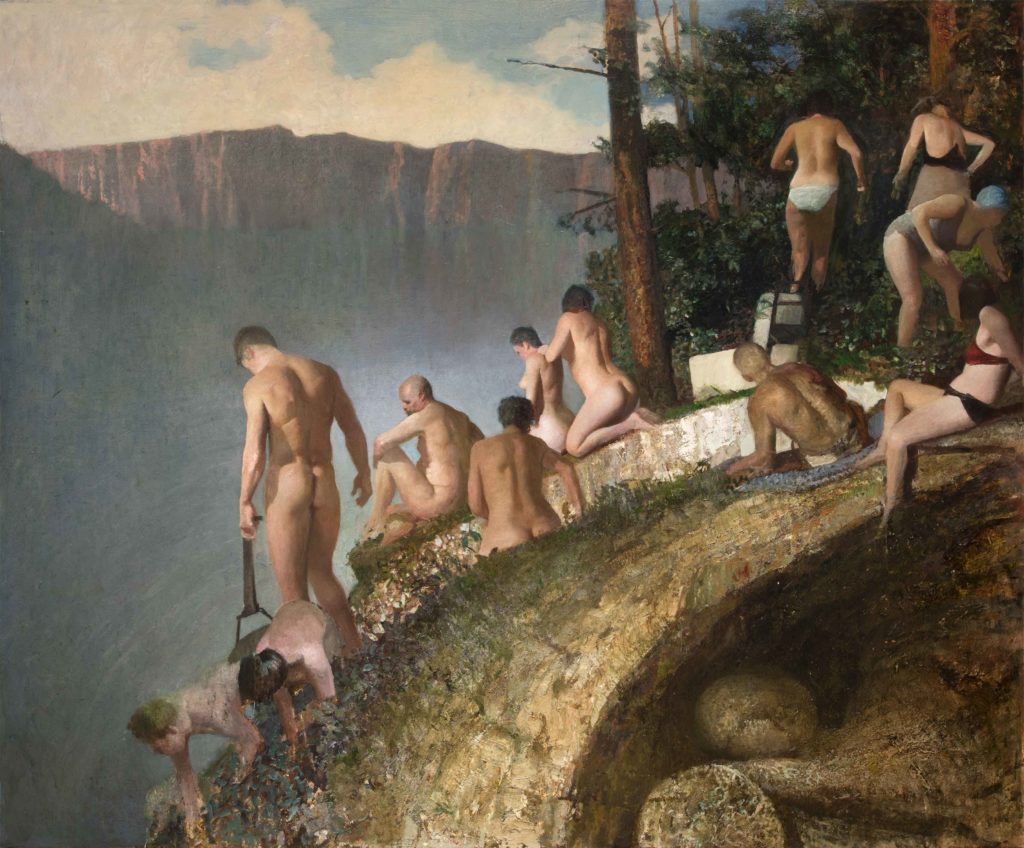
DM: An artist friend recently suggested that humans may have always been at the same level of intelligence. But then I wondered why such a large percentage of the population in classical Athens were doing amazing things. Perhaps because people could speak directly with talents like Socrates? What’s weak about our university system is that a professor writes about Michelangelo and the students read that interpretation rather than Michelangelo’s letters themselves. Through this game of telephone, everything becomes mediocre.
VD: We should be careful when speaking about Athens as an intellectual Arcadia. It was only within the elite that its philosophical, literary, and artistic innovations flourished. For the majority, philosophy was not a preeminent concern, nor is it today.
The object of a liberal arts education is to foster critical thinking: what has been written in books and articles about any given subject can be assessed and challenged if need be. Scholarship is more fluid than most people realize — an ongoing discussion, not the final word. It is replete with biases and misreadings, as well as insights. Michelangelo’s writing tells us a lot less about his thoughts than his artworks do. To really understand him, we must come to terms with his milieu — his early exposure to the neoplatonism of Poliziano in the court of Lorenzo, the influence of Savonarola, and his involvement with clandestine Counter-Reformation movements. When we view his development with this background information, it comes alive in a new way. That is not to say his work cannot, on its own, equip us for our own endeavors, but we can also learn how his genius came to terms with his environment.

DM: I didn’t study art history, but it has been part of my daily meal.
VD: As painters we are obsessed with history, in constant dialogue with it. I would encourage students to familiarize themselves with every possible piece of visual information in cultures worldwide. But I would also require they educate themselves about the contexts in which the works were created.
DM: You’re jumping into a wide and long river.
VD: Absolutely. You sink or swim. Unfortunately, most sink.
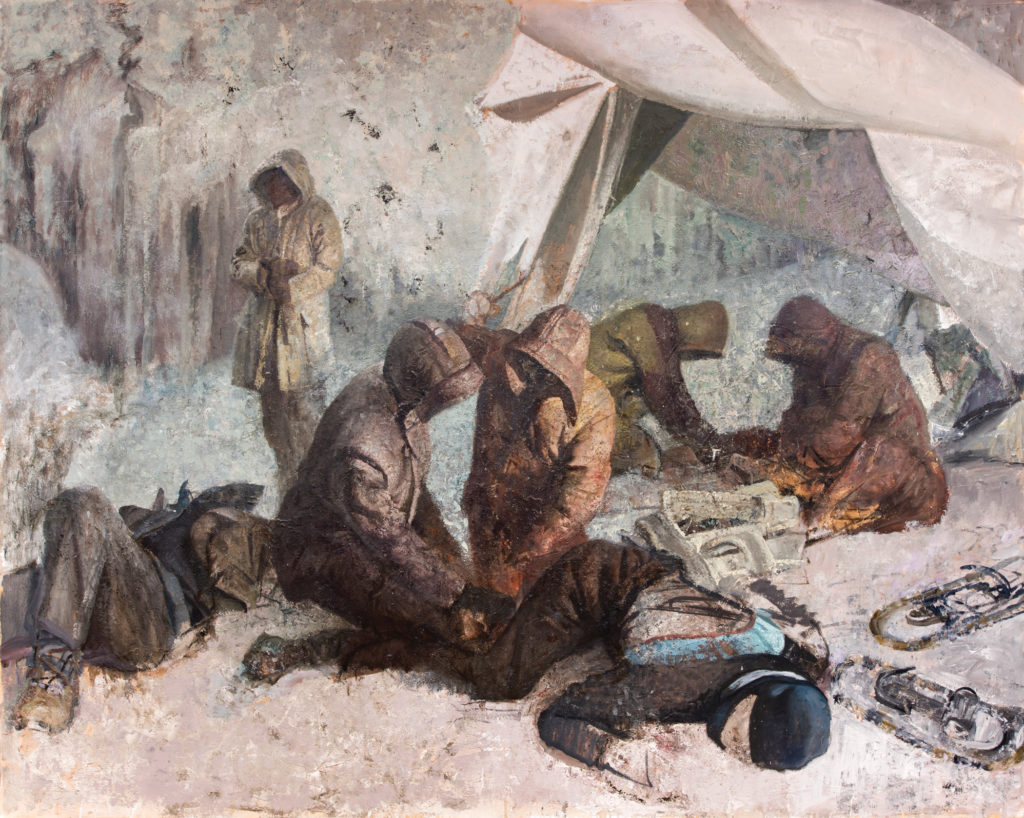
DM: Should we stop prioritizing originality? So much art tries too hard to look contemporary.
VD: You mean, “If it looks like the avant-garde and smells like the avant-garde, it’s not the avant-garde.” In any given era, there are legions of artists doing exactly what their times require. They are seen as cutting-edge but are actually what we call “academic.” They traffic in officious demonstrations of correctness. Those who govern the art market promote the belief that the classic avant-garde never ended; a “ghost allegory” of the avant-garde is perpetually floated above our heads.
DM: It’s a copy of a copy, but we believe it’s as exciting as the original.
VD: That’s right. But in periods of academic ennui, there generally emerge individuals who stand in stark contrast to their times. Ironically, they are seen as the embodiment of their times. It is as if the flint that sparks originality is embodied in a rapid shift or collapse of categorical assumptions. This is where brilliance occurs — the stark realignment of factors in opposition to the times. Originality has more to do with the “real” than the “new.”

DM: It’s almost like the creation of the universe.
VD: I have been accused of demanding too much of painting. A friend once said, “It’s painting, not philosophy.” I asked which model of thinking he himself had the greatest faith in — literature, music, science? — which rational system allowed him to think optimally. For me, art affords the greatest potential. At the moment of instinctual creation, incentive drives you toward the discovery.
DM: That moment of inspiration is like a lightning bolt.
VD: It’s about imagination, about being prepared. Louis Pasteur said, “Chance favors the prepared mind.” A moment of chance could be missed or overlooked. It is our state of preparation that allows us to take note of it.
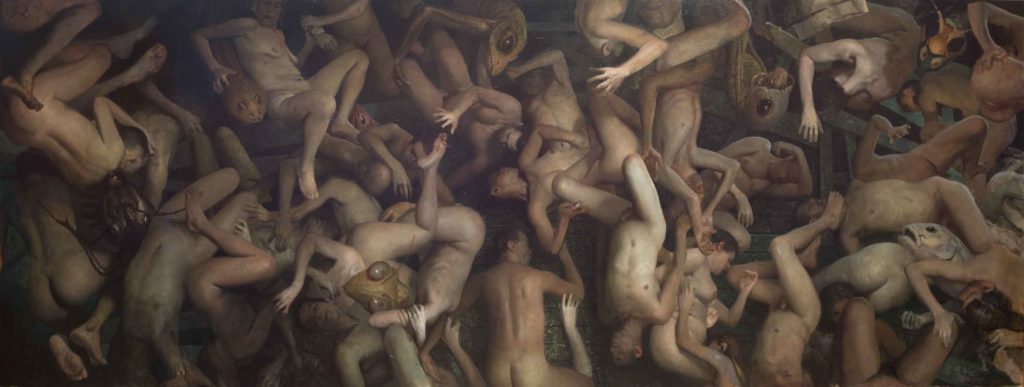
DM: Delacroix is important to you. Was he one of those individuals who turned his back on his times?
VD: Yes! In the wake of the Enlightenment, he, like other Romantics, sought a realm of intelligibility beyond the strictures of science. Form’s privileged position over color had for centuries underscored the rational component of painting. Its measurability and stability held a superior position above color, which was considered ephemeral. Delacroix emphasized the primacy of the half-light, describing direct light and cast shadows as “mere accidents.” This was important to the Impressionists and Post-Impressionists, but there is another aspect of Delacroix that interests me.
In his retrospective at the Metropolitan Museum, four small pictures revealed a major conflict in his developing mind. This conflict, abundantly evident in his writing, concerned his preference for the Classical at the same time he sympathized with Romanticism. From his journals we know he preferred, for example, Mozart to Beethoven and Racine to Shakespeare. He was doubtful of Michelangelo’s over-emphasis on anatomy but fascinated by his terribilità. It can be said of Delacroix what has been said of his friend Chopin: he had the heart of a Classicist and the mind of a Romantic.
It is interesting to note how choice of subject matter can reveal deeper intentions enacted within the technical processes of the painting itself. The four Delacroix paintings I alluded to — “Michelangelo in His Studio,” “Tasso in the Asylum,” “Louis d’Orléans Showing His Mistress,” and “Self-Portrait as Hamlet” — all contrast with similar subjects painted by his rival, Ingres. They also reveal Delacroix’s proclivity for Mannerism.
Whereas Ingres depicted the worldly Raphael, Delacroix painted the brooding Michelangelo. Though they both illustrated scenes from the Renaissance poet Ariosto’s Orlando Furioso, Delacroix also painted Tasso, the quintessential Mannerist poet, locked away in an asylum. Delacroix painted himself as Hamlet, the Mannerist protagonist incapacitated by doubt, and revisited that drama in graphic works.
It is “Louis d’Orléans Showing His Mistress” that best reveals the essence of Delacroix as colorist while underscoring his critique of the “truth” in form. This work is small and not well known, yet it neatly displays the subversive nature of half-light. The subject is taken from a fable in which Duke Louis, a great seducer, tricks the husband of his mistress in a peculiar way. He covers the lady’s head with a sheet while allowing the husband to admire her naked body; he never realizes it’s his own wife. Delacroix makes us privy to both sides of the sheet. On the left, bathed in direct light, is the voluptuous body observed by the husband. On the right in the indirect glow of reflected light is the wily duke cavorting with his love. The ruse is a “play within a play” or, as Picasso would say, “a lie through which the truth is revealed.”

DM: We can learn the history of human thought just through painting. It’s absurd to say that painting is dead or to try to categorize one style of vision within a certain era and not let it carry over into present works. Painting is a shared exploration of the psychology of vision and relationships to the world.
VD: I agree. In a sense, we painters are historical nomads. No longer believing in the inevitability of formal development, recognizing that the classic avant-garde is a thing of the past, we are free to reinvestigate the deep secrets of painting’s history.
Learn more about Vincent Desiderio at vincent-desiderio.com.
> Visit EricRhoads.com to learn about more opportunities for artists and art collectors, including retreats, international art trips, art conventions, and more.
> Sign up to receive Fine Art Today, our free weekly e-newsletter
> Subscribe to Fine Art Connoisseur magazine, so you never miss an issue







